Old Fashioned, Salt and Sugar Home-Cured Bacon
Inroduction
About this Recipe
Home curing meat is a skill that is not generally known or used today, in the past, it was a basic skill that home cooks used weekly. It would be comparable to the way people use crock pots today. But, back in the day, people knew how to do cool things. Okay, so I believe that the old skills still have a place in life today and are of course super cool! But this was how it was done for thousands of years before the luxury of refrigeration. And I’ve discovered the taste to be unlike anything I’ve ever experienced.
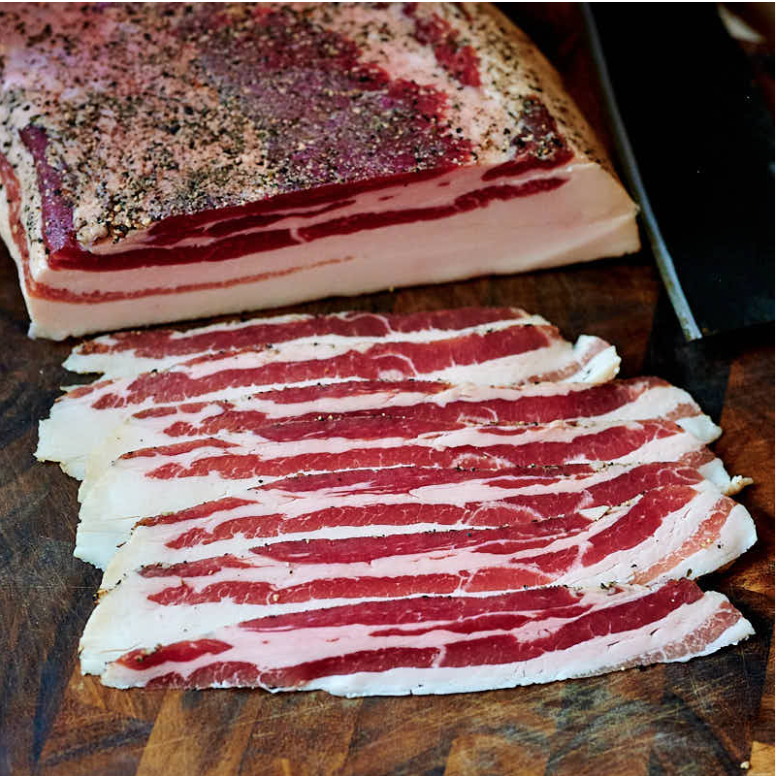

When I fried up some of my bacon for my grandma who is 101 years old the first thing she said was “this takes me back.”
She said food used to have a fuller, richer taste, BLTs were made with “real” bacon and homegrown tomatoes and lettuce. It all naturally had amazing flavor with none of the preservatives and flavor enhancers that are found in food today. We have lost some things in the name of progress, tomatoes that ship well are not what a tomato was meant to be. The subtle flavors of this bacon are much more pronounced and will only get better with a bit of time. It is life-changing!
Food Preservation Safety
There is one main concern when curing and preserving meat, and that is toxic botulism. Botulism is usually associated with improperly canned food but food-borne botulism also occurs in meat that has been improperly cured.
To prevent this, and other food born bacteria commercially preserved meat contains sodium nitrite (sometimes called “pink curing salt”), which acts both as a preservative and a color fixer. This is what gives store-bought bacon that bright red color.
Sodium nitrite is toxic in high quantities, and has been linked to health issues from migraines to cancer. Some organic “uncured” bacon brands use celery juice in place of pink salt, but celery juice often contains more naturally-occurring sodium nitrite than the curing salt! .
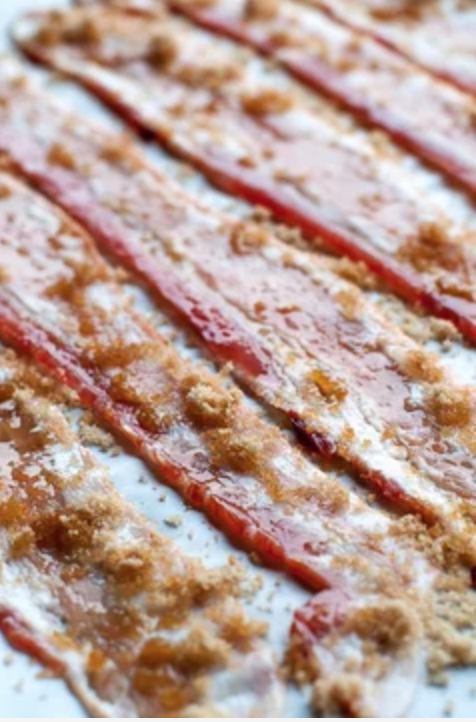
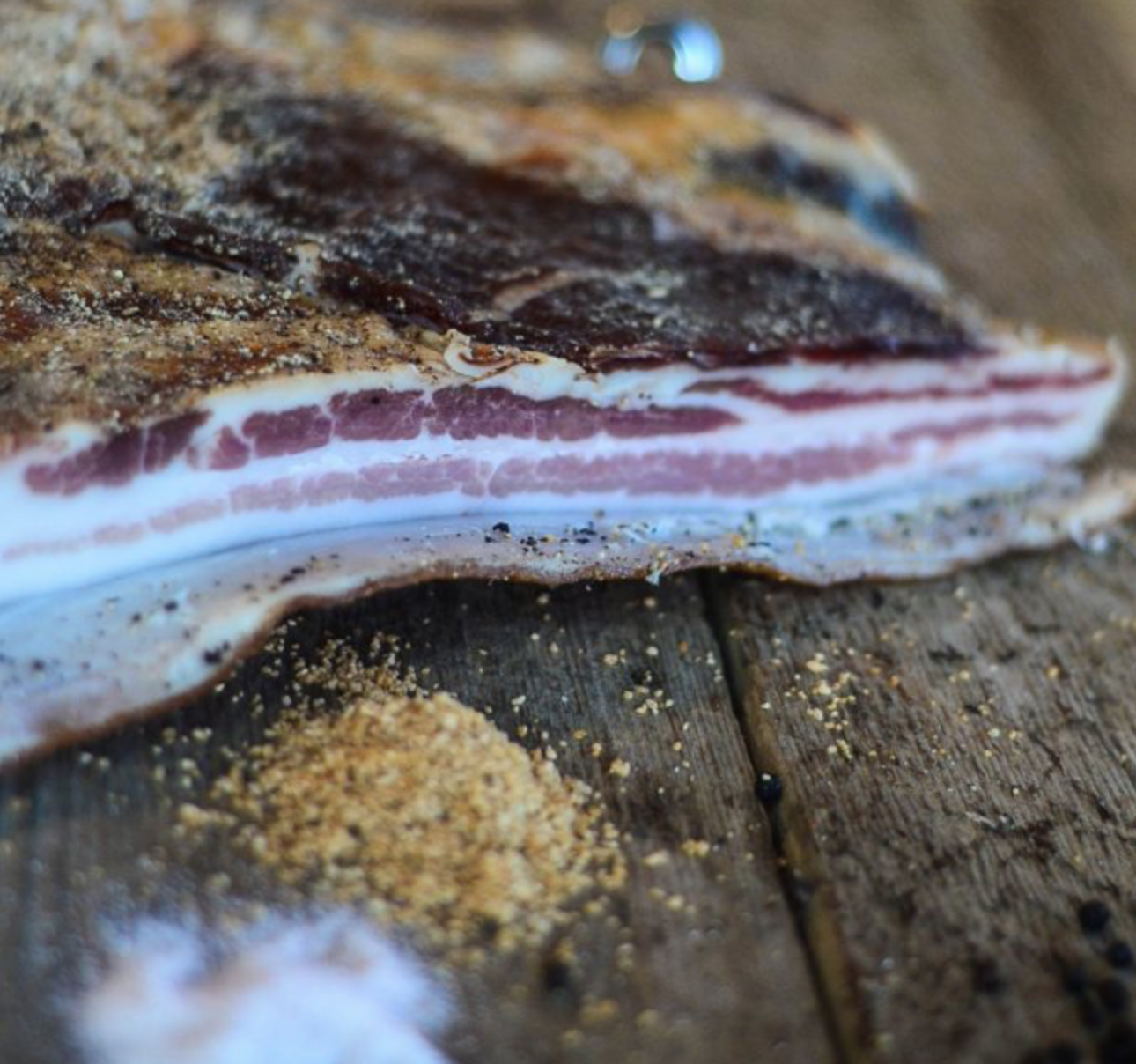
Health benefits of home-cured bacon
The concern with sodium nitrite ( is that when it is exposed to high heat in the presence of protein (like a piece of fried, nitrite-cured bacon), proteins in the meat bond with the sodium nitrite to produce toxic nitrosamines—and certain nitrosamines have been proven to be deadly carcinogens. That sounds terrible, right?
The sodium nitrite is necessary in a large industrial setting, where different people, machines and industrial processes are involved in getting the meat from the processor to the store, free of botulism and other harmful bacteria.
But and here is the most awesome news, the home cook can much better control the variables and can get those assurances WITHOUT the addition of nitrites. And your bacon will taste soooo much, better than anything you’ve purchased in a package. I guarantee it!
Food Preservation Safety
The process of “curing” anything simply means to draw the moisture out, so that the food lasts longer. And this is what we are going to do with your pork belly to make it into bacon. The dry salt curing takes care of the bacteria in the meat. As the bacon sits out, the surface dries out, and this prevents new bacteria from forming. It’s incredibly, really, that the salt can make the meat and fat stable at room temperature. Think of it just like a meat jerky – but not quite as hard (same concept). We’re simply using salt and air to moderate bacteria growth.
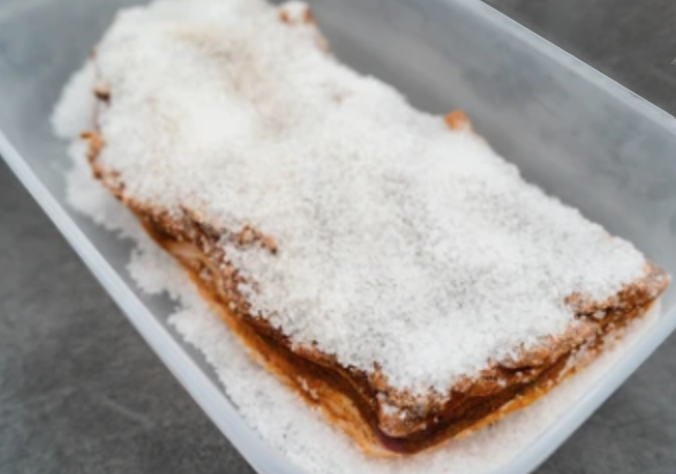

Local Farm Raised Pork
If possible try to find a local farmer or independent processor that you can purchase a farm-raised pork belly. The Coffee Homestead kids are in FFA, so we have show hogs every year that we feed out and have processed locally. Pork belly is not expensive and the curing process utilizes salt and sugar as the largest part of the curing ingredients, so home-cured bacon is much more economical than store-bought.
Home Cured Bacon
Ingredients
- 1 Pork Belly
- 4 Cups Course Kosher Salt or Course Sea Salt
- 3 Cups Sugar in the Raw
- 1 Cup Dark Brown Sugar
- 3 tbsp Nutmeg
- 3 tbsp Smoked Paprika
- 2 tbsp Ground Black Pepper
Optional Ingredients
- 2-3 tbsp Ground Cloves
- 3 tbsp Ground Ginger
- 2 tsp Liquid Smoke
Instructions
- 1. Rinse pork belly and pat it dry. Place in glass dish.
- 2. Mix the dry ingredients in a bowl until they are uniformly combined. Scoop out with a measuring cup enough of the dry mixture to thoroughly coat the pork belly reserve remaining salt mix to use in the next couple of days.
- 3. Rub the sugar and salt mixture into the flesh some more. Did I mention you need to rub that ‘ol pork belly down with the sugar and salt? Rub, rub, rub. The sides too. Make sure to get any pockets or under bits of fat – anywhere where water could accumulate. All of it, man
- 4. Stack the pork belly slab into the large glass baking dish. Stick it in the refrigerator and forget about it until the next day uncovered.
- 5. Next day dump the accumulated liquid out of the dish and rerub the flesh with the sugar and salt, and place it back in the refrigerator.
- 6. The next day, dump out any accumulated liquid and rub the sugar and salt mixture on any part of the pork belly where the salt and sugar has been completely dissolved. A thin layer will do. Repeat this process every day until liquid stops accumulating in the bin. Ours takes about 8-10 days.
- 7. Rinse the pork belly under water, using your fingertips to scrub off any remaining sugar and salt. Pat dry. Voila! Cured bacon
Smoking Cured Bacon
- Only smoking will give the pork belly that smokey flavor most are used to. We have tried the bacon both ways smoked and “green” and as much as I love all things grilled and smoked we actually prefer the “green” bacon. So just know that if you don’t have a smoker this bacon is still and absolute winner!
- If smoking, smoke over hickory or apple-wood at 175-200 degrees until meat reaches an internal temperature of 150 degrees F, or about 3 hours.
- The meat should be cooked a bit on the outside, but not all the way through.Let the bacon cool to room temperature on a wire rack over a baking sheet, tightly wrap in parchment paper, then refrigerate for at least 4 hours, preferably overnight. (This sets the flavor and texture.)
- With a long, very sharp knife, slice it thin or thick, as desired. Use hard-to-slice pieces in pots of beans or soup.

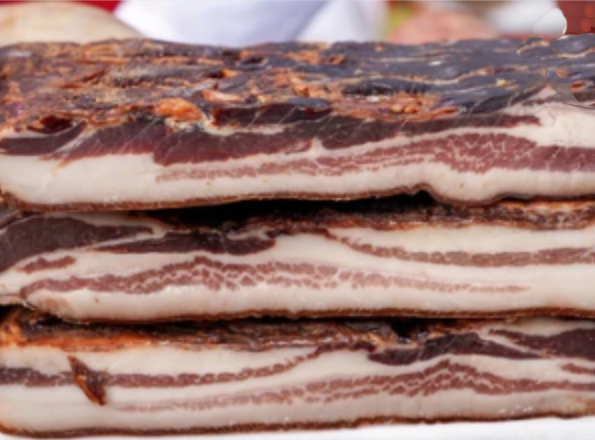
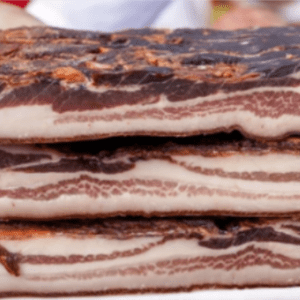



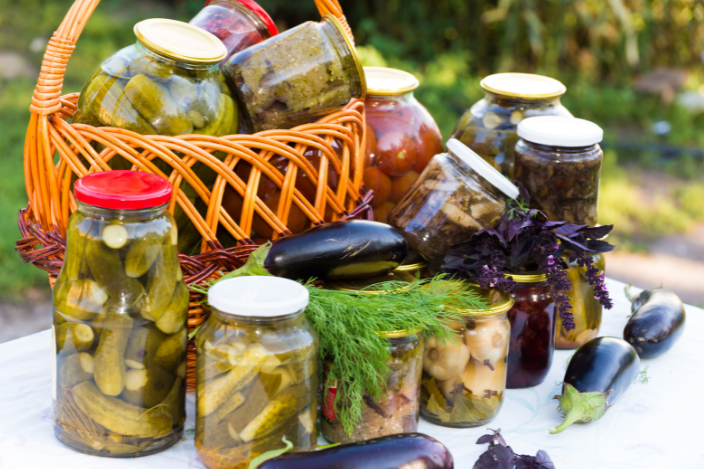

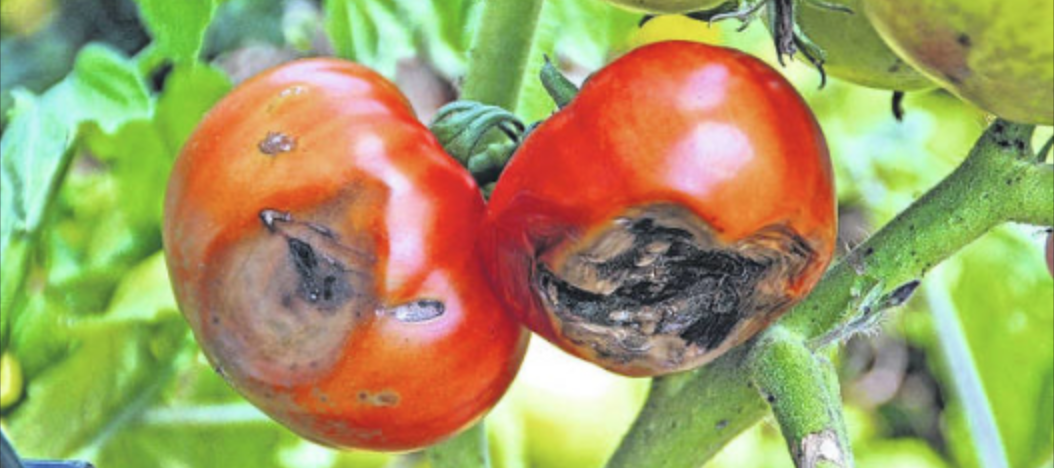









Amazing information, I had no idea curing bacon was so easy. I don’t have a smoker will this have enough flavor without smoking? What do you recommend to add more flavor?
We only smoke our bacon about half the time, this recipe provides plenty of flavor without the smoke. However you can mix in your favorite grilling season just check ingredients and try to make sure it just has “natural” seasonings in it. Also, some plain smoke seasoning or smoked paprika could add some smokey flavor if you think you would miss that element. You could also try some warm spices, like ground cloves and nutmeg. I usually use some of each and it just adds a nice depth of flavor. Thanks for the comment and I hope this information was helpful.
I believe that is among the so much vital info for
me. And i’m happy reading your article. But should statement on some
basic issues, The web site style is great, the articles is in reality great :
D. Excellent activity, cheers
For newest information you have to pay a visit world-wide-web and on the web I found this web site as a most excellent site for hottest updates.
Hey very nice blog!
Hi, I do believe this is an excellent web site. I stumbledupon it ;
) I’m going to revisit yet again since i have saved as a favorite it.
Money and freedom is the best way to change, may you be rich and continue to help others.
This article presents clear idea for the new viewers of blogging, that truly how to do
blogging and site-building.
whoah this blog is excellent i like reading
your posts. Stay up the great work! You understand, a lot of
people are searching round for this info, you could help them greatly.
I was suggested this website by my cousin. I am
not sure whether this post is written by him as no one else
know such detailed about my trouble. You’re wonderful!
Thanks!
With havin so much written content do you ever run into any issues of plagorism or copyright violation? My website has a lot of unique content I’ve either written myself or outsourced
but it looks like a lot of it is popping it up all over
the internet without my authorization. Do you know any ways
to help reduce content from being ripped off?
I’d genuinely appreciate it.
Normally I don’t learn post on blogs, however I wish to say
that this write-up very compelled me to take a look at and do so!
Your writing style has been amazed me. Thanks, quite
great post.
After I initially left a comment I seem to have clicked on the -Notify me when new comments are added- checkbox and now whenever a
comment is added I recieve 4 emails with the exact same comment.
There has to be an easy method you are able to remove me from that service?
Thanks!
What i don’t understood is in reality how
you’re no longer actually a lot more well-appreciated than you may be right now.
You’re very intelligent. You understand therefore
considerably in the case of this subject, produced me for my part consider
it from numerous various angles. Its like men and women aren’t interested until it is something to do with Girl gaga!
Your individual stuffs great. At all times handle it up!
Yes! Finally something about website.
Actually when someone doesn’t be aware of afterward its up
to other people that they will help, so here it takes place.
This paragraph provides clear idea designed for
the new people of blogging, that really how to do running a blog.
Hello I am so thrilled I found your blog page, I really
found you by accident, while I was searching on Aol for something else, Anyways I am here
now and would just like to say thank you for a remarkable post and a all round thrilling
blog (I also love the theme/design), I don’t have time to read it all at the minute but I have book-marked it and also added your RSS feeds,
so when I have time I will be back to read much more, Please do
keep up the excellent work.
Hurrah! In the end I got a weblog from where I be capable of actually get helpful information concerning my study and knowledge.
Hi there, You’ve done an incredible job. I’ll definitely digg it and personally suggest to my friends.
I am sure they will be benefited from this web site.
Wow, awesome blog format! How long have you ever been blogging for?
you make running a blog look easy. The overall look of your site is excellent, let alone
the content!
Can I just say what a comfort to uncover someone who truly knows
what they are talking about on the net. You actually know
how to bring an issue to light and make it important. More people need to look at this and understand
this side of your story. It’s surprising you aren’t more popular because you most
certainly have the gift.
Thank you! Numerous content!
You actually explained that effectively!